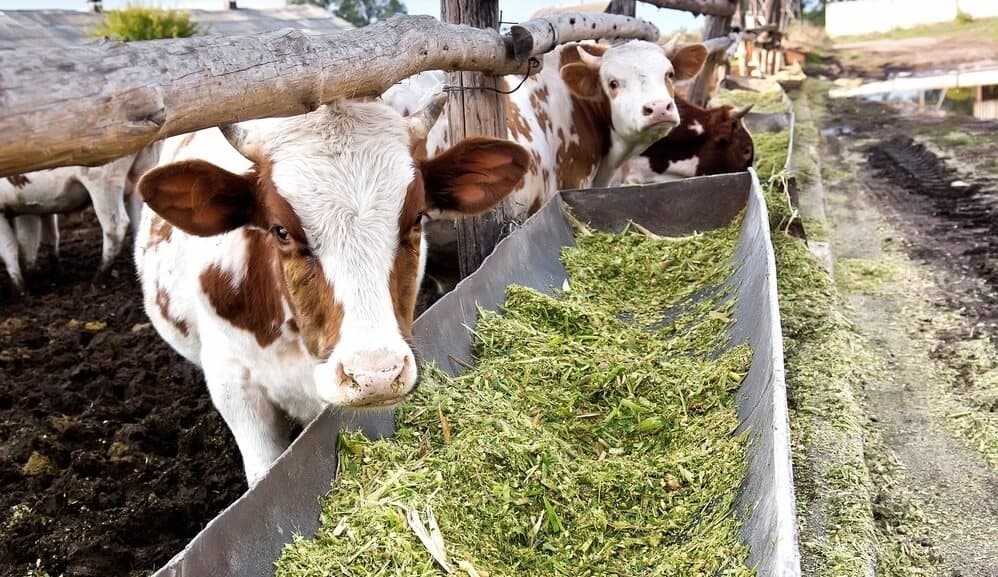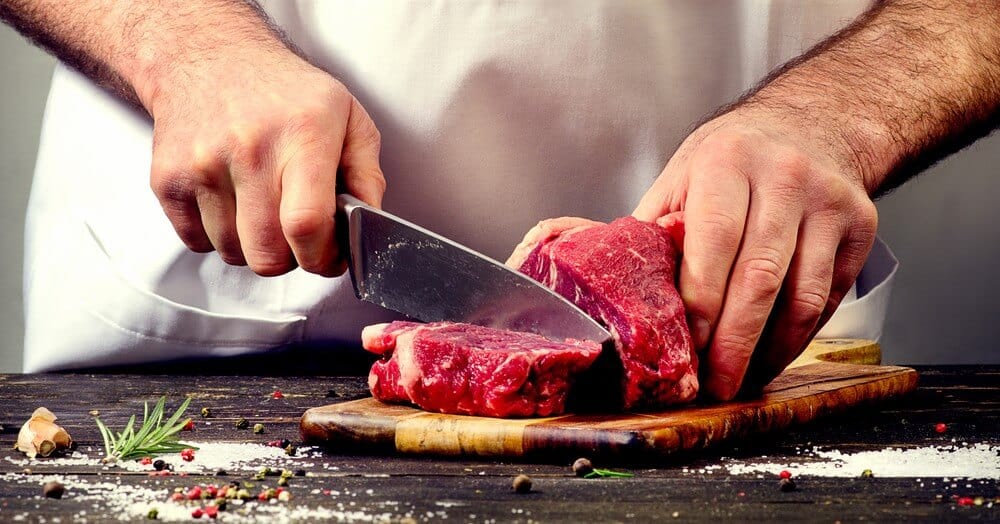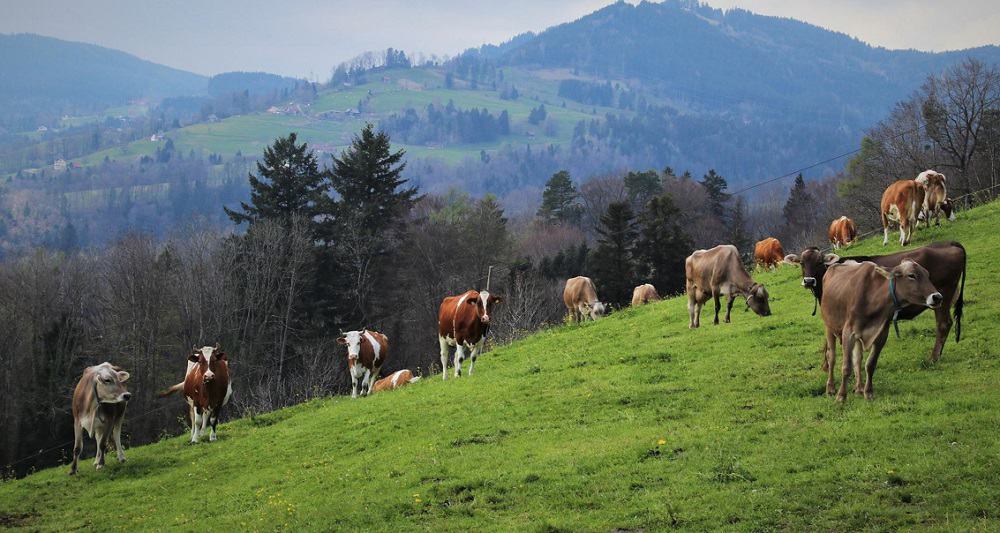Feeder cattle are a valued product across businesses like farming, fashion, sporting materials, and musical instruments. In this article, we explain what is feeder cattle, why it’s important, what we need it for, how to produce it, and what controls its value.
What is Feeder Cattle
Feeder cattle include weaned calves that weigh 600 to 800 lbs. At that stage, live cattle farmers provide them with a feed of high-energy nutrients to encourage weight gain. This happens in feedlots. Eventually, these cattle achieve a weight of 1,200 to 1,400 pounds. After they reach this weight, the ranch slaughters the feeder cattle to produce beef.
Some breeds to raise as feeder cattle are Charolais, Belgian blue cattle, Red angus, Black angus, Limousin cattle, and Hereford.
What is Feeder Cattle’s Role Within the Economy
Global ingestion of beef reaches about 60 million tons a year. The economic influence of the meat sector in the USA is as much as $1 trillion. The beef industry provides millions of jobs such as dealers, wholesalers, and vendors. Feeder cattle are a crucial aspect of the beef industry and other worldwide markets.
What is Feeder Cattle Used For
Feeder cattle have several uses across the globe. Here are the most popular products that come from them:
Beef
Beef is a primary food product globally. It provides products including:
- Hamburgers
- Steaks
- Roast beef
By-Products
- Many countries consume feeder cattle by-products like brains, liver, tripe, kidney, and tongue.
- Beef fat provides Oleo stock and oil that make products like shortening and margarine.
- Producers make candies and chewing gums from edible beef fat known as Oleo stearin.
- Gelatin from the skin and bones of feeder cattle helps make marshmallows, canned meats, and even desserts like ice cream.
Beef Hide
The hide is another popular feeder cattle product for making:
- Leather
- Felt
- Textiles
- Ointment bases
- Asphalt and plaster binder
- Insulation material bases
- Brushes
- Footballs
Beef Fats
Beef fats help make non-edible products like:
- Industrial oils
- Greases
- Soaps
- Cosmetics
- Creams
- Chemicals
- Insecticides
- Detergents
Horns, Hooves, and Bones
Feeder cattle provide useful boney products that you can use to make items like:
- Buttons
- Piano keys
- Glue
- Manures
What is Feeder Cattle Production
Feeder cattle production is a multifaceted, challenging business. Positive results rely on appropriate animal breeding methods and ideal financial management. Producers begin by breeding female cows with male bulls either organically or via artificial insemination. They usually breed feeder cattle in the summer to birth calves by the spring.

What is the Feeder Cattle Breeding Process
An organic breeding method for feeder cattle typically needs one male for every 20 – 25 females. However, many farmers prefer artificial insemination. That helps to manage calf genetics in the herd.
They must assign a fixed pasture space as grazing land for every cow and its offspring. That set area is called the stocking rate, which differs from place to place according to climate conditions and upkeep methods.
The USA is the best cattle producer in the world. Their stocking rate can reach up to five acres for each cow-calf pair in high rainfall areas towards the East and 150 acres in arid terrains to the West/Southwest.
Every cow typically births one calf, while some may rarely have twins. Not every cow gives birth; climate, health, and nourishment can impact the conception rate.
What is Feeder Cattle Slaughter for
Feeder cattle producers normally reject around 15 – 25% of their cows in the herd and assign them for slaughter. The most popular reasons for slaughtering cows are:
- Failed reproduction
- Progressed age
- Poor teeth
- Drought
- Inflated feed charges.
Ranch owners hold back some of the female feeder calves once born to replace the rejected cows. The remaining ones eventually go for slaughter.
What is Feeder Cattle’s Raising Time
The raising timeline for feeder cattle includes:
The initial six months
During the first six months after birth, the feeder calf stays with its mother and gets its primary nutrition via nursing. With time, producers complement their feed via grass-feeding, gradually switching to grain.
Six to eight months
At this stage, the feeder calf weighs between 500 and 600 lbs., at which point producers wean it. Then, the feeder calves go through stocker cattle operations while the heavier animals head directly for the feedlots.
Stocker operations
Fed cattle get grass in the summer and wheat or other roughage in winter. Finally, they weigh 600 – 800 pounds and achieve feeder cattle status. That feeding stage usually lasts for 6 – 10 months.
Feedlot
Producers have three options after stocking:
- Keep raising the feeder cattle on their property till they acquire the necessary weight for butchery.
- Direct the feeder cattle to commercial feedlots. Producers still retain ownership of their cattle while they feed at the feedlots.
- Trade the feeder cattle to other producers or feedlot companies.
Producers provide feeder cattle with high-energy nutrition to increase their weight. The cattle usually comprise castrated male steers or female heifers that have never given birth. They reserve heifers and bulls for beef breeding instead of sending them to the feedlots.
What Determines Feeder Cattle Price
Some factors that influence the costs of these types of cattle include:
Feed Cost
Feed costs throughout history, specifically for corn, are inversely correlated to feeder cattle value. As the price of the “finished” product declines, consumers are willing to pay more for the “transitional” product.
Corn is an essential part of the feeder cattle raising procedure that many producers can focus on to establish risks. Dealers wanting to estimate feeder cattle costs should observe the grain markets and what influences feeder cattle prices.
Climate
Climate can influence feeder cattle costs in multiple ways. The climate has a significant influence on grain costs. For example, severe drought or extreme cold can reduce grain stock and cause price inflation. That usually harms their costs.
Climate also directly impacts the feeder cattle raising procedure. For example, extreme heat can reduce cattle appetite and increase the time to get fully-fed feeder cattle.
Worldwide Beef Demand

Beef is an in-demand consumer item that typically costs more than other food sources. As a result, beef demand historically correlates to global wealth. As developing economies grow more affluent, beef intake rises. Likewise, beef consumption in developed countries often relates to general economic development.
So, feeder cattle dealers should take note of metrics like GDP and unemployment to estimate feeder cattle costs. Imports of US agriculture also impact cattle costs. Canada, Mexico, and China are the three primary exporters of US agriculture.
Substitution
Beef contests against other animal products like chicken, lamb, or fish. Many features can influence what these clients opt for, but price typically has the primary role. As beef prices increase, people can substitute other animal products into their regimes. Other features that result in substitution are illnesses in feeder cattle like mad cow disease.
Energy Costs
Energy needed to raise feeder cattle far surpasses other animal protein sources. According to some estimates, beef production needs ten times more resources than raising chicken, dairy, eggs, or pork.
The additional costs of raising beef cattle – land, water, manure, et cetera – rely heavily on energy prices. Overall, the cost of oil, gas, coal, and other energy bases can significantly affect beef costs.
Live Cattle vs Feeder Cattle
What is the difference between live cattle and feeder cattle?
There are difference in weight between the two. Feeder cattle are 6 – 10 months old. They are newly weaned and sent to feedlots which are also called animal feeding operations (AFOs) to reach their potential weight before slaughtering. Live cattle, also called fed cattle in futures contracts, are sold when the heifers and steers have reached their market weight potential. The live cattle are then sold to a packer for slaughter.
What weight is considered feeder cattle?
Feeder cattle are typically between 600 and 800 pounds.
Purpose for Raising Feeder Cattle
There are many reasons why a farm would choose to raise feeder cattle. These animals can provide meat for the farm’s own use or for sale, they can help with crop rotation, and they can improve the soil quality.
Additional reasons why a farm might raise cows in this way is that the farmer may be looking for a way to dispose of their extra calves. They may be wanting to improve the genetics of their herd, or they may simply need to find a way to generate more income.
Whatever the reason, raising cattle for this purpose can be a profitable endeavor for livestock farmers. They are an important part of sustainable agriculture, and they play a vital role in our food system.
What are Feeder Cattle
I hope this article provides you with enough information on what is feeder cattle? Learn more about cattle, including raising mini milking cows and specific breeds of cattle such as Brown Swiss cattle, Limousin cattle, Scottish Highland cattle and more. Take care of them with a cattle shed.

